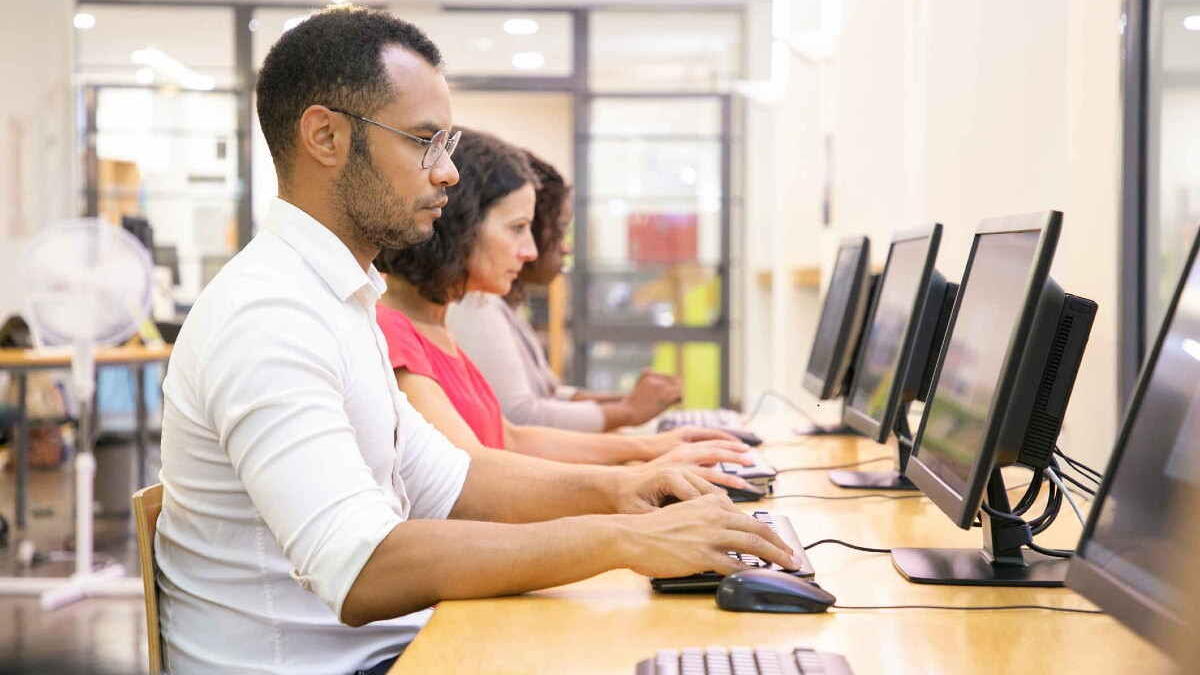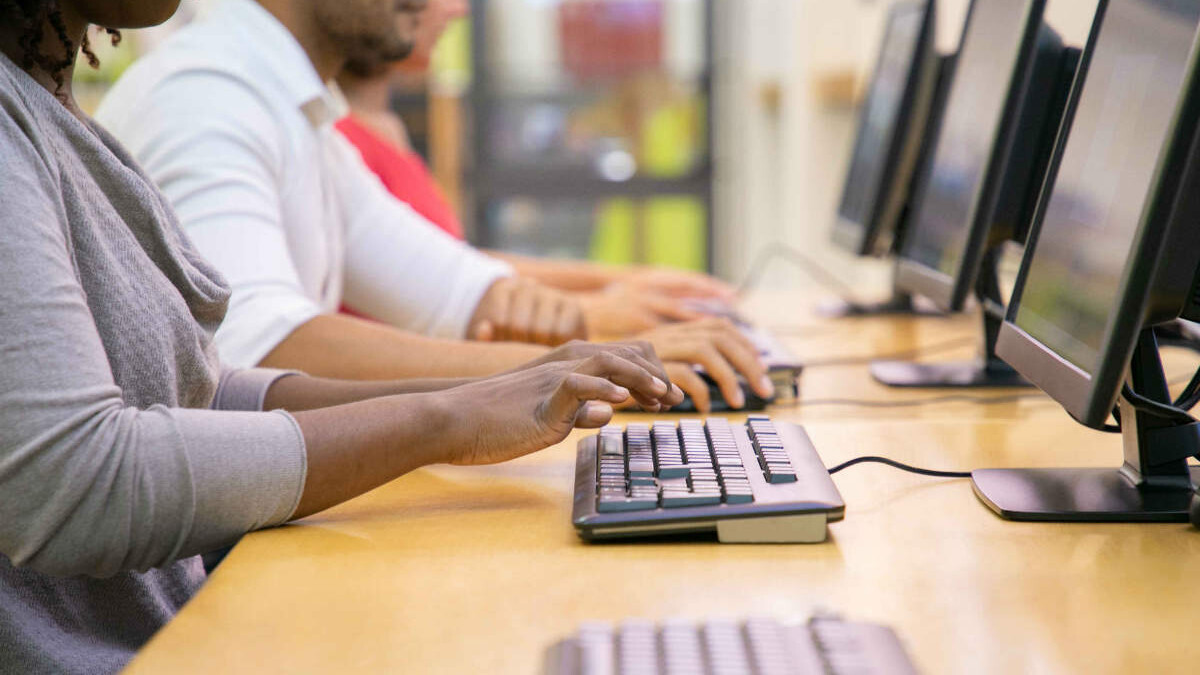How the COVID-19 restrictions present an opportunity to transform education: One-on-one with new Janison CEO David Caspari [Q&A]
The current lockdown has accelerated educators’, students’ and parents’ interactions with online, remote and flexible learning and assessment technologies. It has exposed the education system’s strengths, but also a vast opportunity for a rethink of how we ensure its continuity into the future. So, what happens next? I spoke to our new CEO David Caspari to get his insights.
Q: How has the impact of COVID-19 restrictions changed the way we see education?
A: COVID-19 has accelerated a decade’s worth of technology and cultural transformation into less than six months. It has done more to speed up the move to online in the education space and the way people educate and learn than probably any other trend in recent times. It’s a true disruptive event and it’s going to create a new normal. It will actually drive a better student experience, as well as teaching and learning outcomes.
Moving teaching and assessment online isn’t just about replacing pen and paper with a screen. Great teaching and learning requires the pedagogy to be entirely refreshed, forcing teachers and lecturers to be more creative in the way they deliver learning.
Q: What does a creative approach involve?
A: It includes, for example, a shift for assessments to be more focused on measuring critical thinking skills. For the large part, many universities hadn’t put in place proper high-stakes assessment platforms because they had very little confidence that people don’t have an open book right next to them. They now realise that they have to develop far more sophisticated assessments that explore critical thinking, with the assumption that the book is open.
But there’s more to this. I’m a firm believer that in the face of the rise of artificial intelligence, with machines more efficiently doing work we used to do, it’s human skills that are unreplaceable. The buzzword for these is ‘soft skills’ but I prefer to call them ‘human skills’. They include relationship skills and true creativity – proper science, engineering, architecture, ability to resolve unpredictable situations. Critical thinking is a foundation, and the education system and teaching needs to change to reflect that.
Q: Where do you see that opportunity arising for Australian education?
A: Let’s take Australia as a microcosm of what’s happening globally in higher education. Our universities contributed $41 billion to the Australian economy and supported a total of 259,100 full-time jobs in 2018. And, more broadly, out of every $1 that’s invested in higher education research and development, $5 comes back into our economy.
Coming out of COVID-19, Australia will need even more new ideas, new skills and new jobs to power the economic and social recovery. When you take this view, educational continuity including assessments becomes even more important.
Q: What are some of the current hurdles for system-level change in terms of education delivery going online?
A: One of the most significant impediments to digitising education delivery has been a lack of confidence and reluctance among educators. Now that the circumstances of COVID-19 are forcing change, teachers and academics are very quickly developing the confidence and professional capabilities to work in a virtual environment. Once we get back to a semblance of normality we’re not going to revert back to where we were – we’re going to find a middle ground.
There’s a mindset shift taking place. Right now the solutions which educational institutions are implementing are quite reactive and short term. In the medium-term we will see more enduring change that really addresses the underlying pedagogy and teaching and learning methodology, including high-stakes assessments.
Q: What role do you see innovation and technology playing in that mindset shift?
A: Technology is ultimately about delivering and enabling better teaching and learning outcomes. In its own right, technology is simply another channel or platform on which to deliver that. It’s what the teachers and learners do with technology that ultimately matters.
Technology enables more creativity. We’re still only at the very start of a phase of innovation – for example with artificial intelligence, the internet of things, augmented reality, mobility, and other advancements – we’ve barely touched the surface of our potential. These trends are yet to play out but they’re being accelerated by this current disruption. This will also affect teaching and learning.
An example of this are the exciting opportunities to create and deliver authentic assessment, for a whole generation of young people who are digital natives. Assessment technology allows us to set test questions using media-rich, interactive graphics and videos, or ask them to upload their answers via common software applications such as spreadsheets and PowerPoint presentations. This more accurately mirrors students’ real-world, day-to-day experiences which, let’s face it, are predominantly digital and online experiences. Authentic assessment measures their creative and critical thinking skills within a relevant, realistic and digital context. Such possibilities are simply incomparable with what static pen-and-paper assessments offer.
Q: What do you think has been behind the education sector’s reluctance to fully embrace technology as a solution?
A: As well as a general lack of confidence and professional development in going digital, the education system in its nature is inherently an evolutionary, not revolutionary, sector. It has developed over generations incrementally. Decisions are made over an extended period of time with a lot of consideration. It’s very different from other industries which are much more disruptive and accelerative in their pace of change, and that’s reflected in the willingness to embrace new tools.
If you take a look at the digitisation of various sectors over the past decade, consumer adoption is far faster in the adoption of technology than governments and education. Now that learners are also ‘consumers’, they’re demanding that education shifts too, and goes digital.
Q: What’s one of the most important lessons to learn from the impact of the COVID-19 lockdown?
A: It’s definitely the critical importance of business continuity. Once we recover from the current shock, there won’t be a single university campus, university council or minister of education who won’t be tasking their executives to ensure that they solve the issue of continuity to prepare for a recurrence of COVID-19 or a similar crisis. Two things that, for example, universities must address in order to continue to operate and run courses and degrees are to deliver teaching and be able to assess properly in high-stakes scenarios.
Other sectors have thought deeply about having business continuity plans in place for unexpected scenarios, whether they be health-related or natural disasters. COVID-19 has exposed the fact that the education sector hadn’t prepared business continuity plans for circumstances like this. Education continuity is the foundation of the sector’s business models.
Find out how Janison’s technology can allow your organisation to continue delivering education and assessment amid COVID-19. Read more.
About the author
Ewa Jaremka
Contributor
You might also like
Want to learn more about our tailored solutions?
Chat to one of our assessment or learning consultants today.
or call us on 1300 857 687 (Australia) or +61 2 6652 9850 (International)




